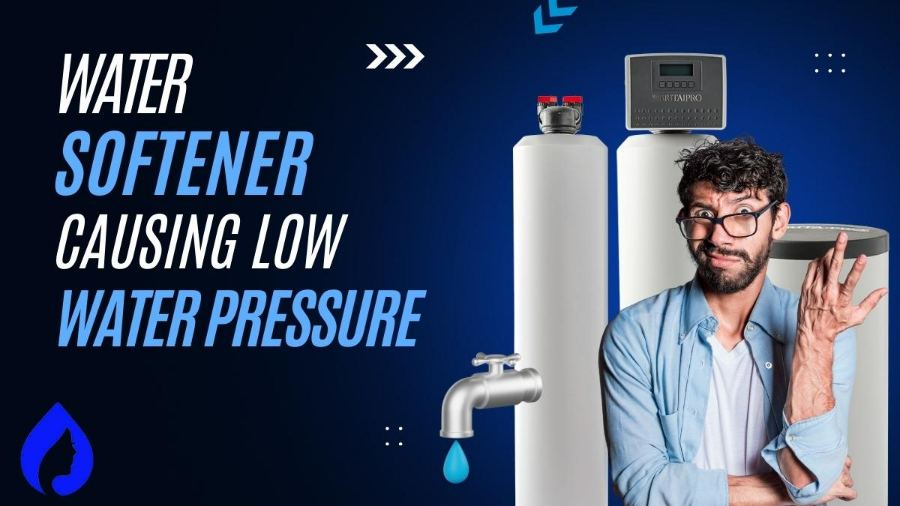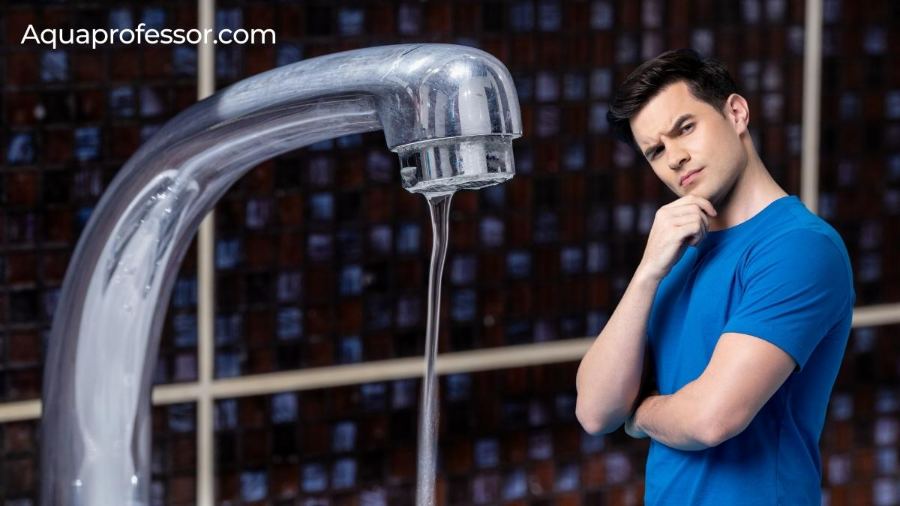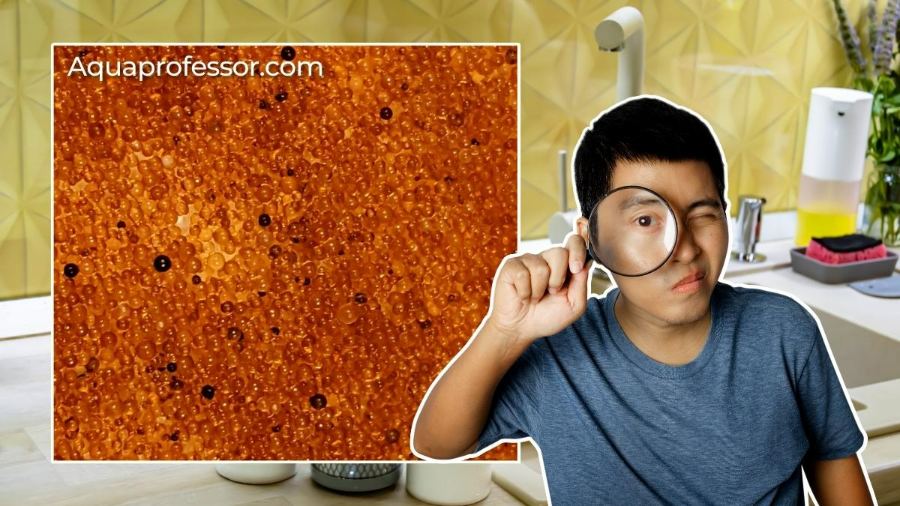
It is normal for water softeners to reduce water pressure by around 7 PSI. However, if you observe chronically low pressure, there may be underlying concerns like:
Replacing expired resin beads, replacing sediment filters, or flushing clogged resin beads can help recover the pressure loss.
Continue reading for 7 main reasons why water softeners cause low water pressure, along with practical solutions!
🤔Why Is My Water Softener Causing Low Water Pressure?

As said earlier, a slight drop in water flow rate or pressure is normal after installing a water softener.
Specifically, it is common to experience up to a 5 gallons per minute (GPM) decrease in water flow rate or a 5 pounds per square inch (PSI) pressure drop.
However, if you are witnessing a significant pressure drop (more than 5 PSI), your water softener might be the culprit.
To confirm if your water softener is indeed causing the low pressure, you can bypass the water softener temporarily and observe if the water pressure returns to normal.
If the pressure improves when the softener is forgotten, it indicates that the water softener is indeed causing the issue.
| Reason | Solution |
| Clogging in resin bed or sediment filter | Flush the resin bed or clean/replace the resin tank sediment filter |
| Clogged Pipes/Water line leak | Inspect and clear any clogs or repair leaks in steel pipes |
| Clogging in the water supply valve or aerator screen | Clean or replace the main water supply line valve or aerator screen |
| Low water softener pressure regulator settings | Adjust the pressure regulator settings to the appropriate level |
| Expired Resin Beads | Replace the resin beads |
| Undersized softener | Upgrade to a larger capacity water softener |
| Water softener used during REGEN | Avoid using water during the regeneration cycle |
🚱Clogging in Resin Bed or Sediment Filter
Over time, mineral deposits can accumulate in the resin bed or sediment filter, clogging and creating low water pressure in your house’s water filtration system.
Here’s how to fix it:
Also Read: 9 Reasons Why Well Water Pressure Fluctuates
💦Clogged Pipes/Water Line Leak

Clogs or leaks in the pipes or water lines can restrict water flow and cause low water pressure.
You can easily clear out any clogs to restore proper water flow by following these steps:
🚿Clogging in Water Supply Valve or Aerator Screen
A clogged water supply valve or aerator screen can restrict water flow straight to your shower heads.
Clean or replace the water supply valve or clogged aerator screen to eliminate the blockage and improve water pressure.
Also Read: Why Is My Water Softener Not Working
📠Low Water Softener Pressure Regulator Settings
Most water softener systems need a minimum of 20 PSI water pressure and a maximum of 70 PSI to operate properly.
The level at which the water softener system works optimally is 50 PSI pressure.
So, if your water pressure regulator is set too low (less than 20 PSI), it can reduce the water flow rate.
Also, the softener won’t be able to complete a proper regeneration cycle.
To fix this:
Adjust the water pressure regulator settings to ensure it is around 50 PSI to allow optimal water flow through the supply pipes.
📿Expired Resin Beads

Resin beads have a normal lifespan of 10-20 years. Its lifespan can be affected by excess chlorine in feed water.
Either way, the beads get less effective with time and reduce water pressure.
To solve this, replace the resin beads on time to restore the softener’s performance and improve water flow in the entire system.
🤏Undersized Water Softener
If your water softener is undersized for your household’s water demands, it may struggle to keep up with the required water flow, resulting in low water pressure.
Follow this formula to size your water softener properly:
*Average daily water usage (in gallons)* water hardness level in GPG * 71
1Note: It is assumed the softener will regenerate weekly.
Use our calculator to get your ideal water softener size:
Note:
[1] EPA Water Sense estimates that an average US resident uses 70 gallons of water daily. So if you don’t know your average daily water consumption data, enter 70 or 75.
[2] You can find your water hardness by checking your municipality’s water quality reports or using hardness test kits.
Pro Tip:
If you’ve just bought your water softening system and find it undersized now, contact the manufacturer for a replacement (even at an extra cost). You will not want the hassle of low pressure and inadequate softening for long, right?
🕹️Water Softener Used During Regeneration
Using water during the water softener’s regeneration cycle can cause temporary low pressure. Here’s a secret to solve this:
Also Read: What Happens If You Add Too Much Salt In Water Softener?
⚒️How to Fix Low Water Pressure From Water Softener?

We already discussed the solutions to increase water pressure after the softener installation above, but here’s a quick recap in case you missed any crucial point:
❓Water Softener Causing Low Water Pressure: FAQs
How do I know if my water softener is clogged?
Signs of a clogged or defective water softener include reduced water flow, decreased water pressure, and inefficient water softening.
Flushing the resin bed or cleaning/replacing the sediment filter can help resolve the issue.
What is a water softener’s minimum and maximum water pressure?
Water softeners typically operate within a range of 20-70 pounds per square inch (PSI).
However, it is recommended to check the manufacturer’s specifications for your water softener’s specific minimum and maximum pressure requirements.
Why is my water pressure low after installing a new water softener?
Low pressure after installing a new water softener system could be due to the following:
1. Bad installation
2. Wrong-sized softener
3. Defective softener
Contact the manufacturer for fixing or softener tank replacement.
Always research before buying and opt for reputed and helpful softener brands like SpringWell, so you don’t have to worry about your water softener again.
Why have I suddenly got low water pressure?
Several factors, including pipe leaks, clogs, issues with the water softener, or problems with the municipal water supply pipe system, can cause sudden low water pressure.
It is crucial to investigate the source of the issue to determine the appropriate solution, as detailed above.
Do I need a pressure-reducing valve for a water softener?
If your water pressure exceeds 80 PSI, you need a pressure-reducing valve to protect your plumbing system from leaks and appliances like the water softener system from damage.
Adarsh is a Health & Nutrition Sciences graduate with expertise in environmental health. He is associated with ventures like Glacier Fresh Filter and Simpure Filter Systems. Through Aqua Professor, he intends to provide helpful information to every home to help them make smarter decisions.
